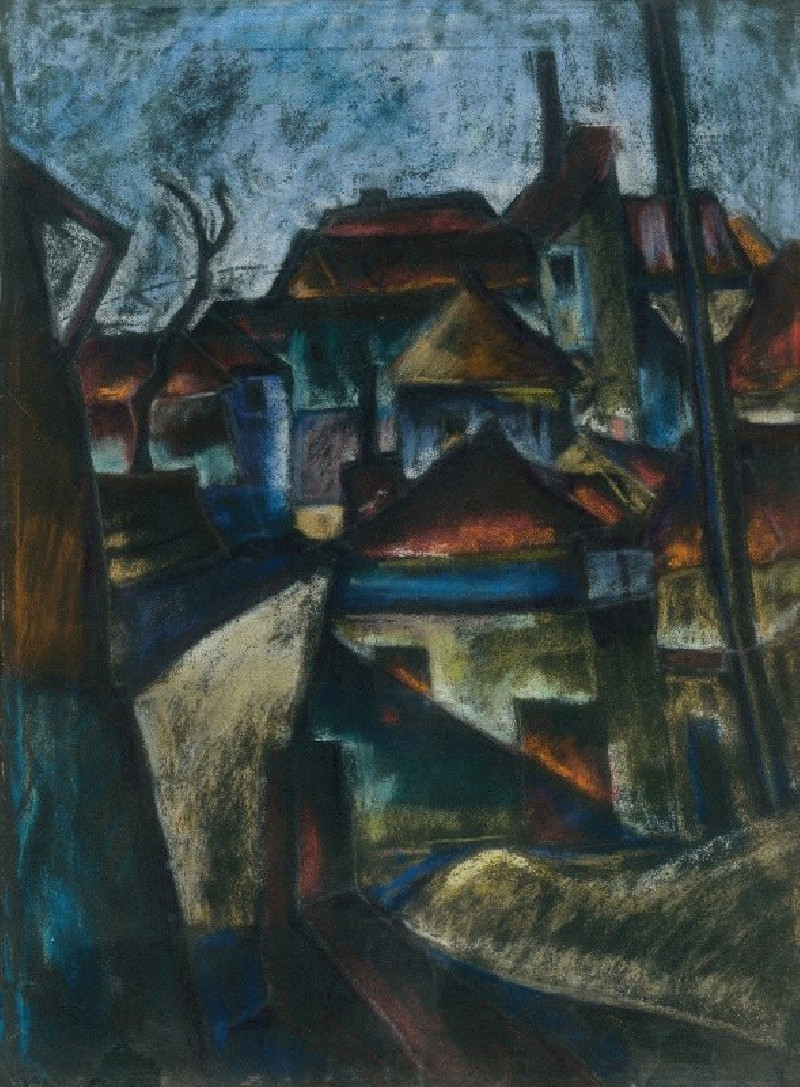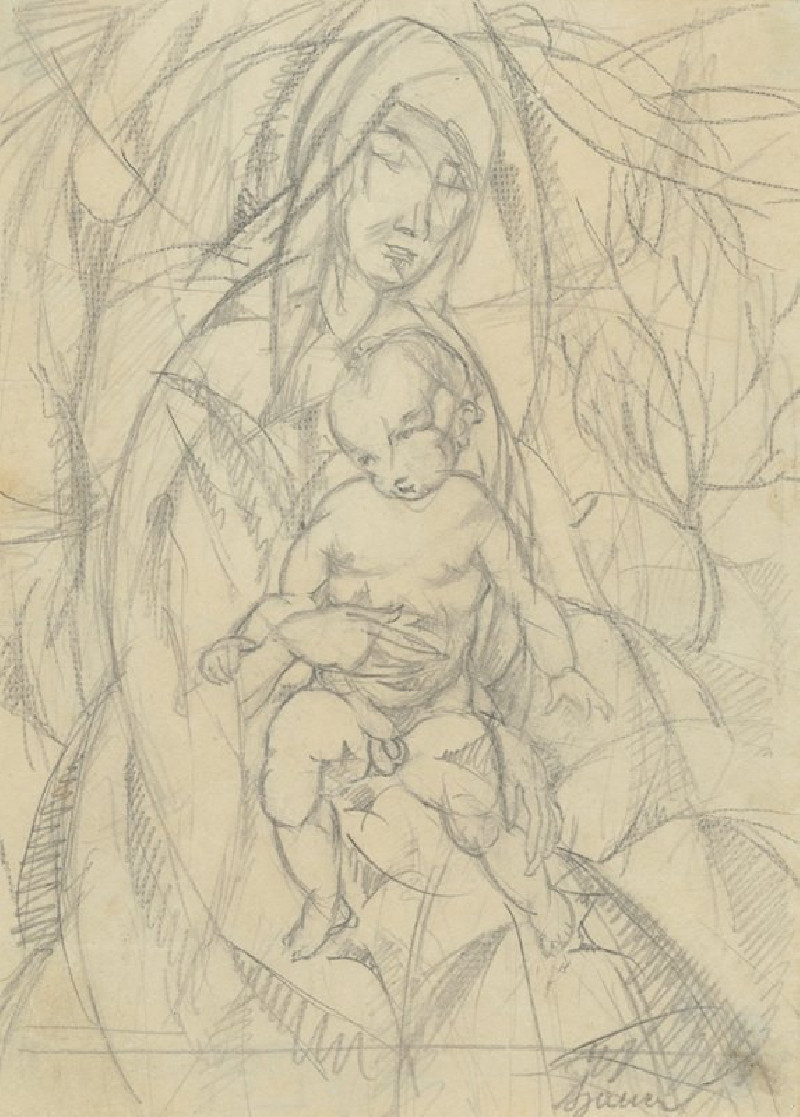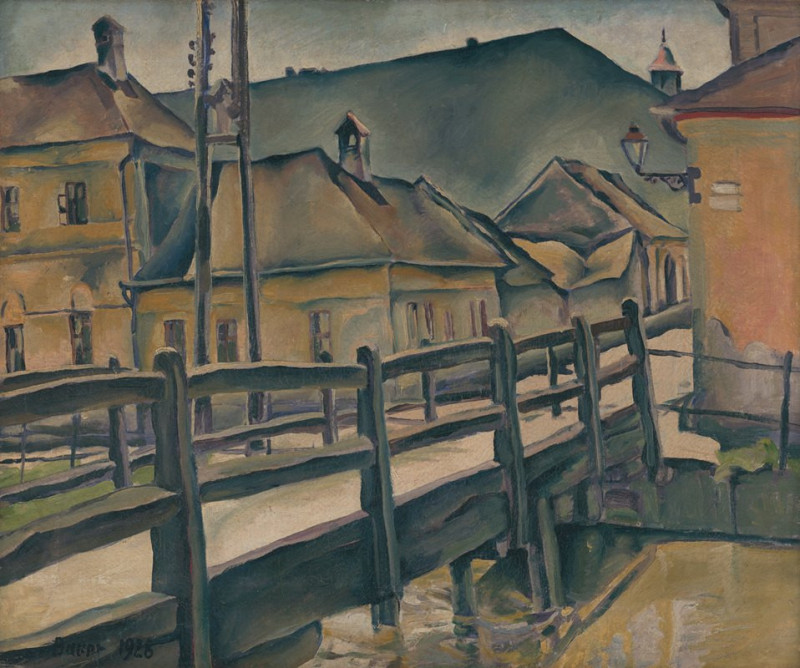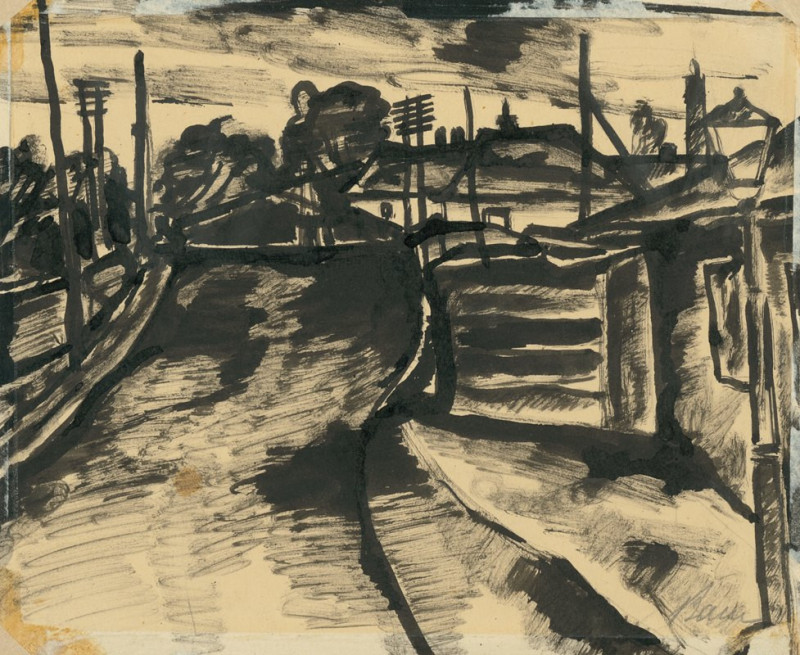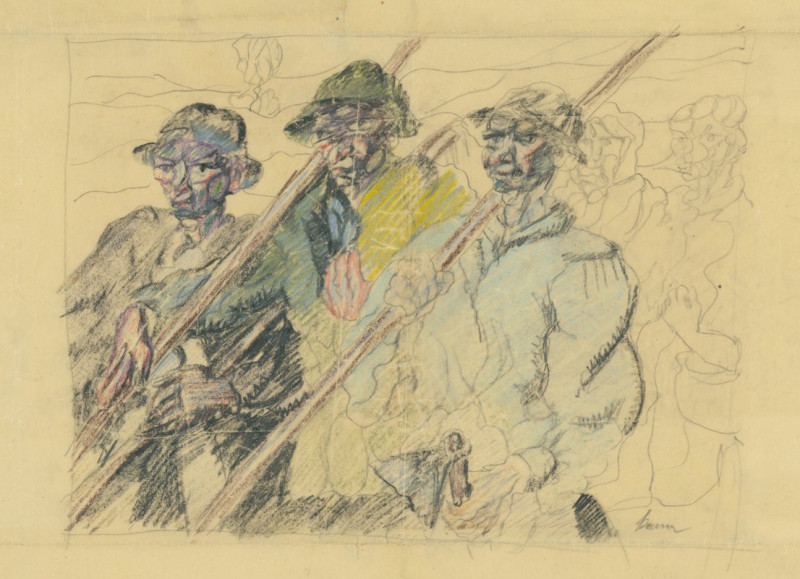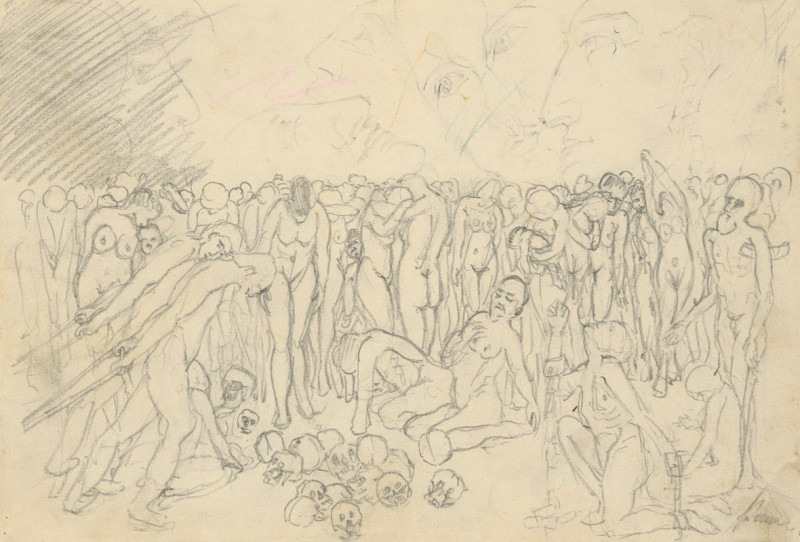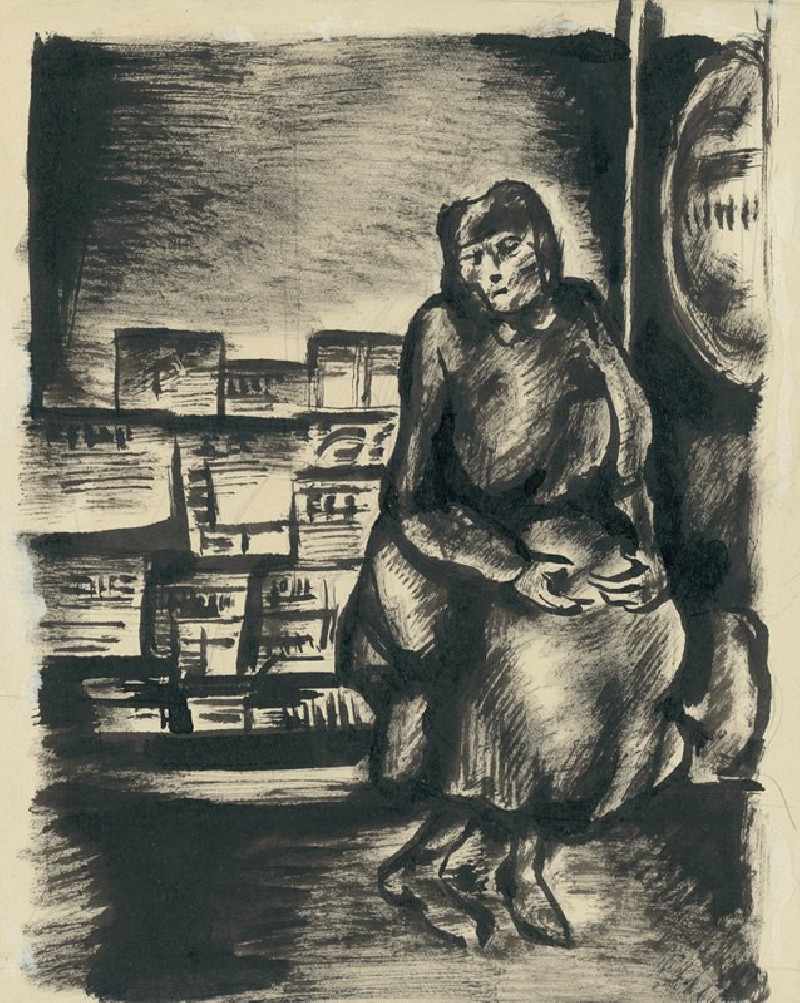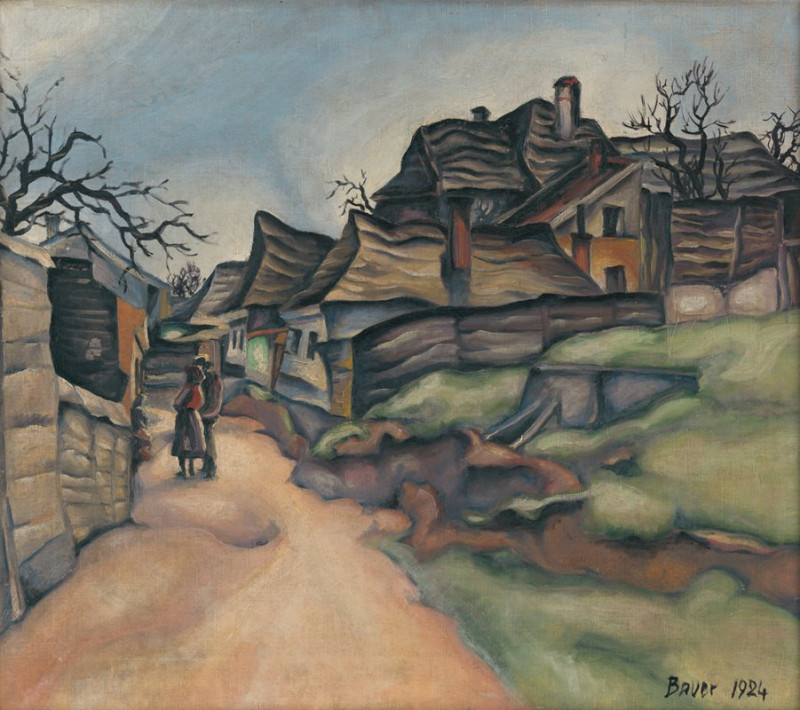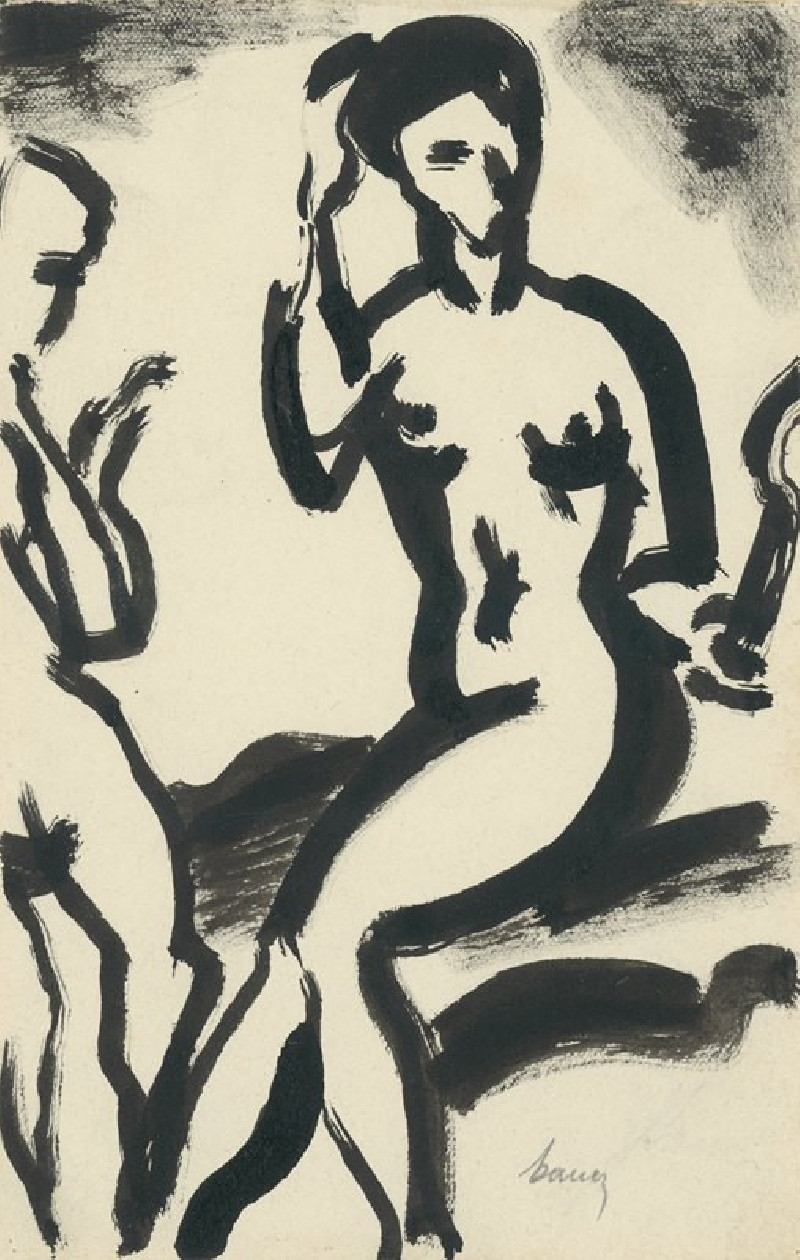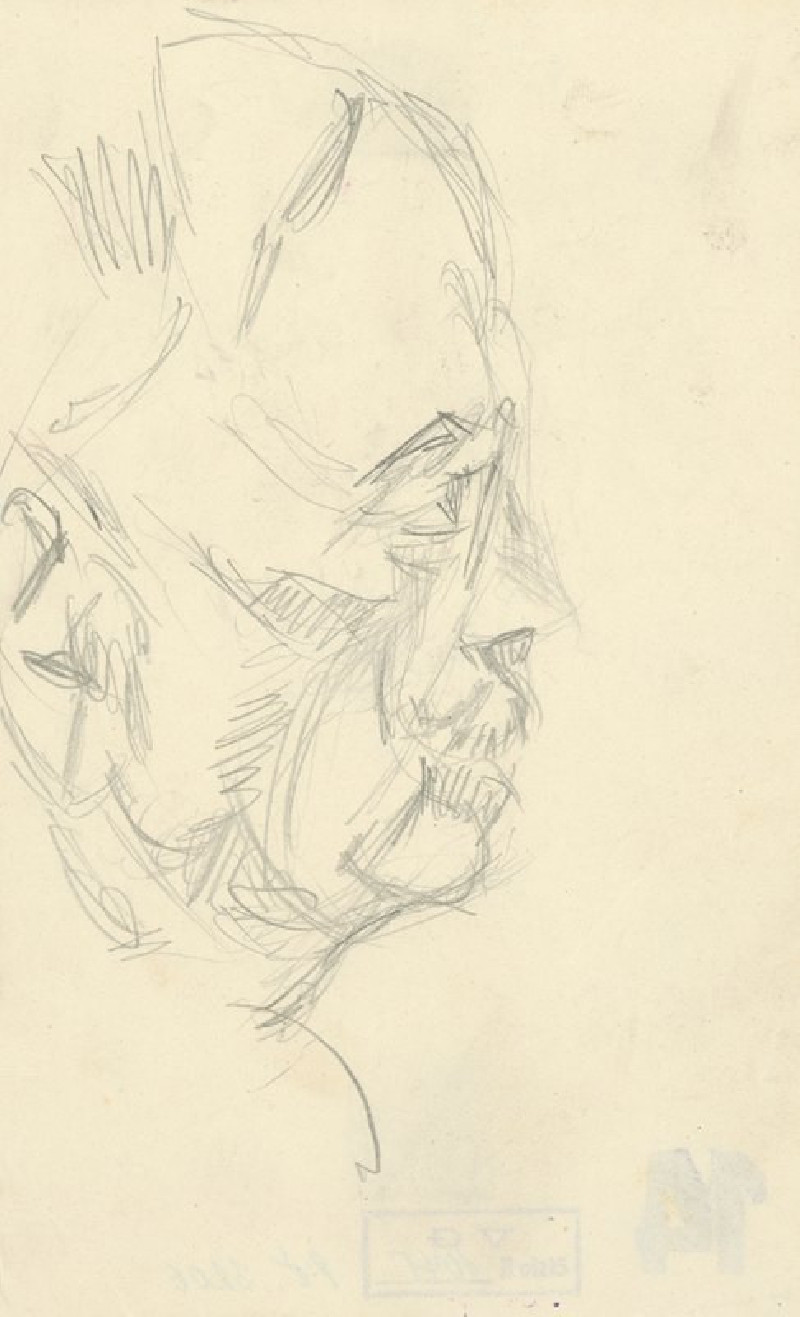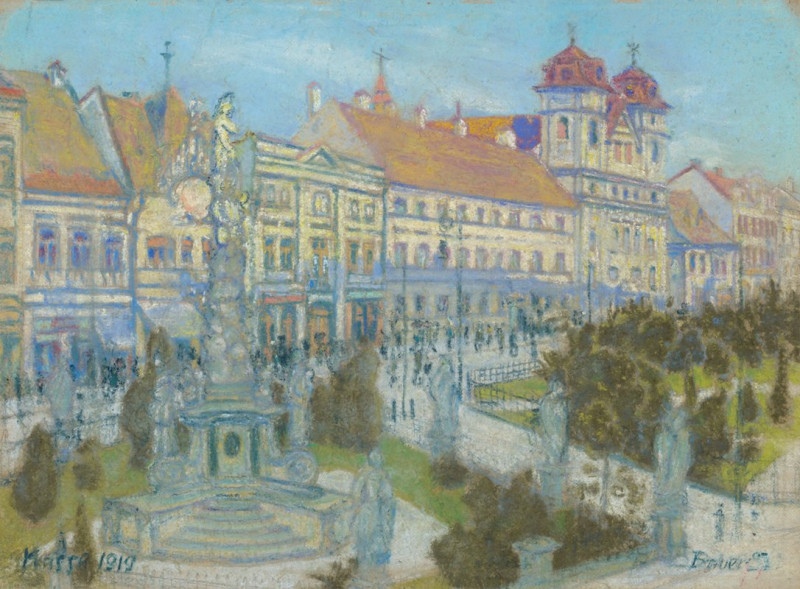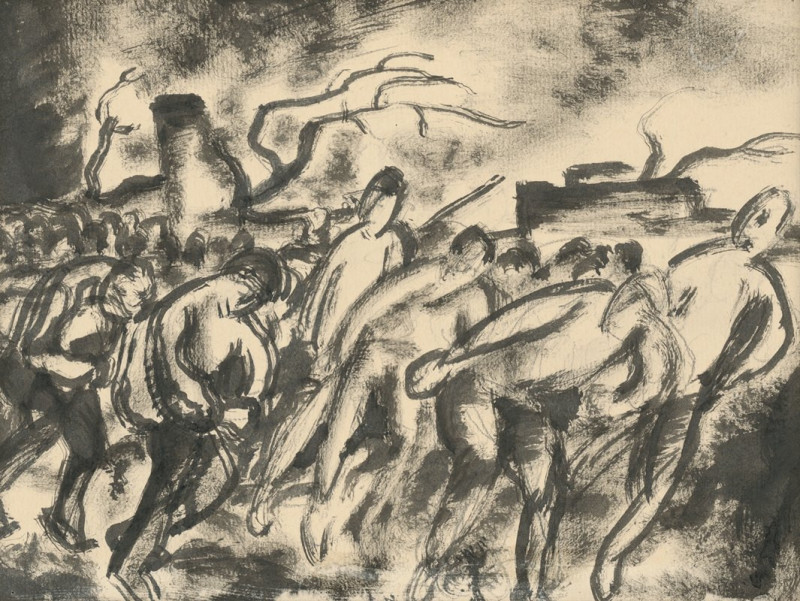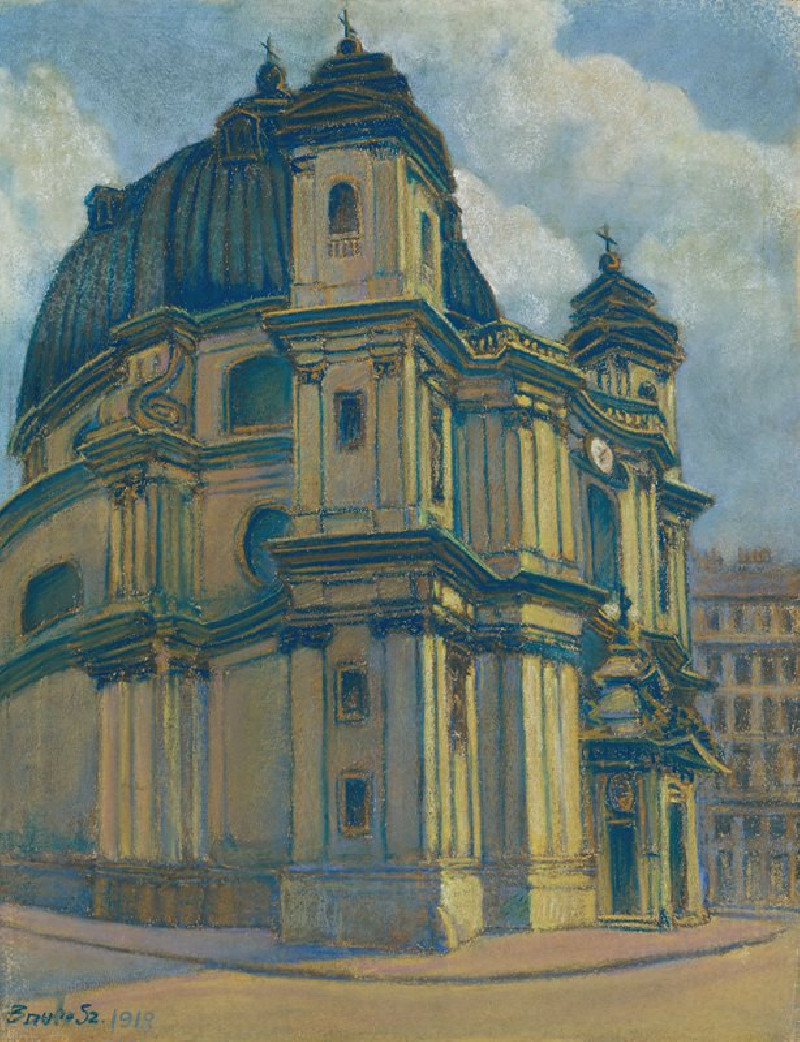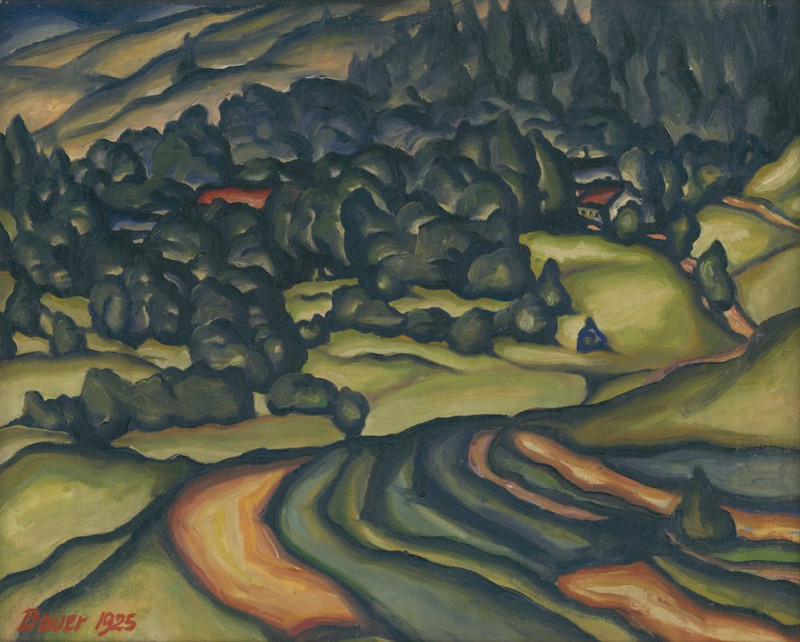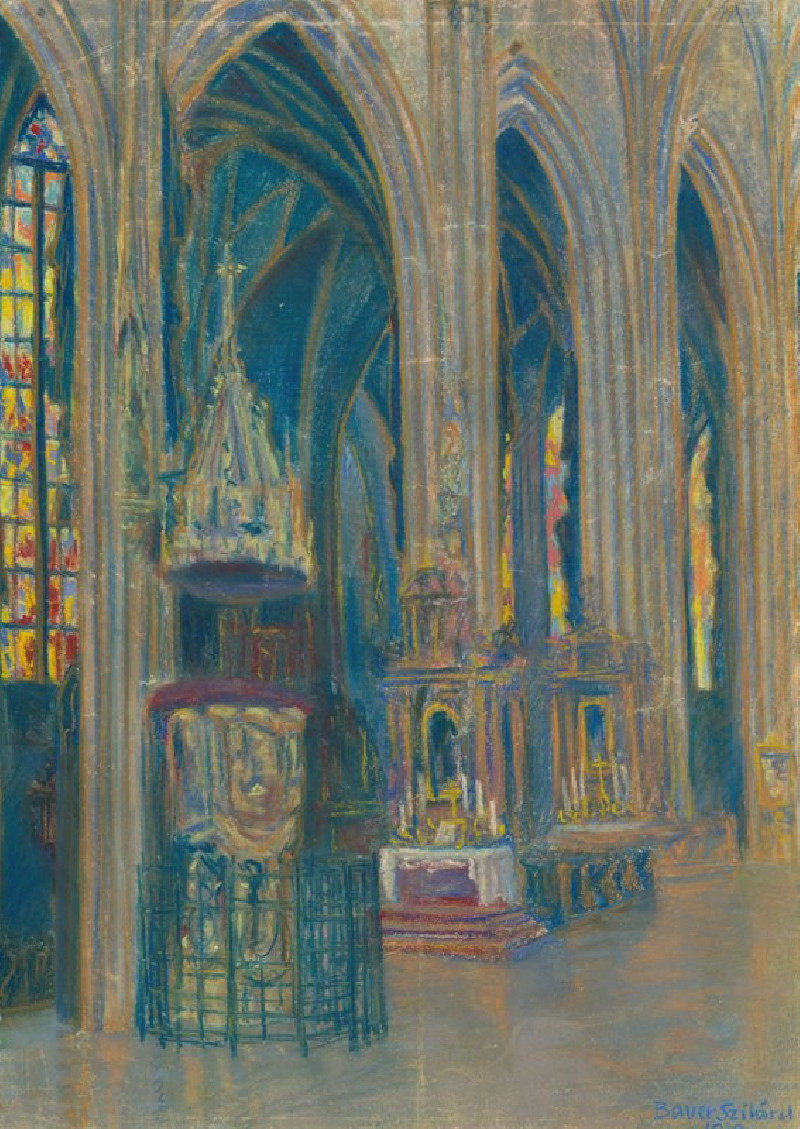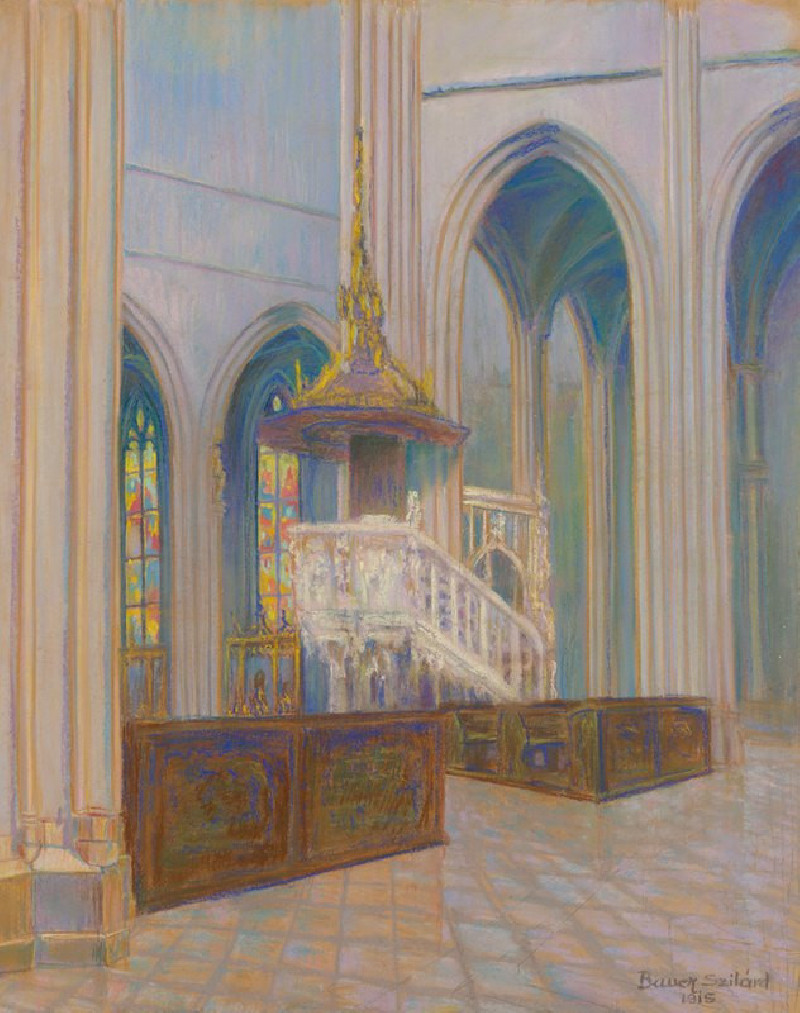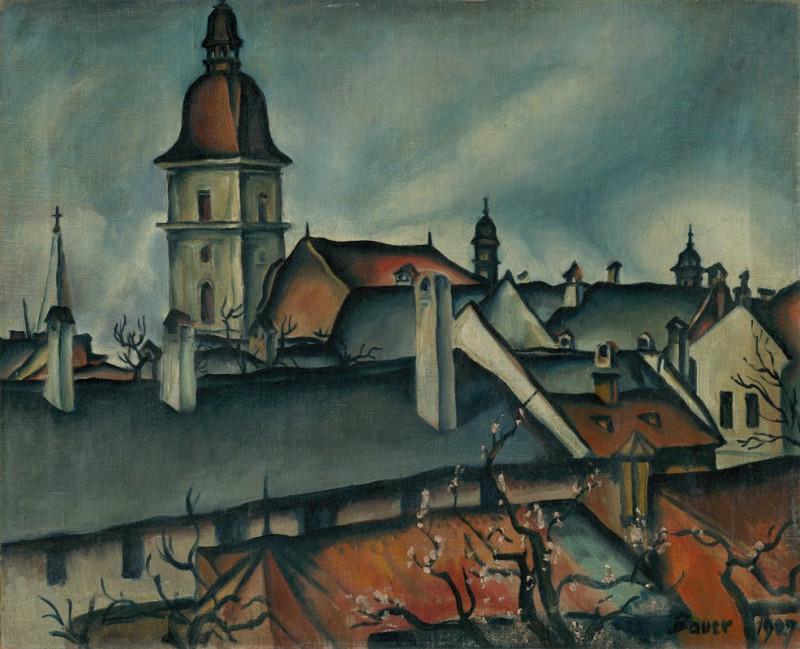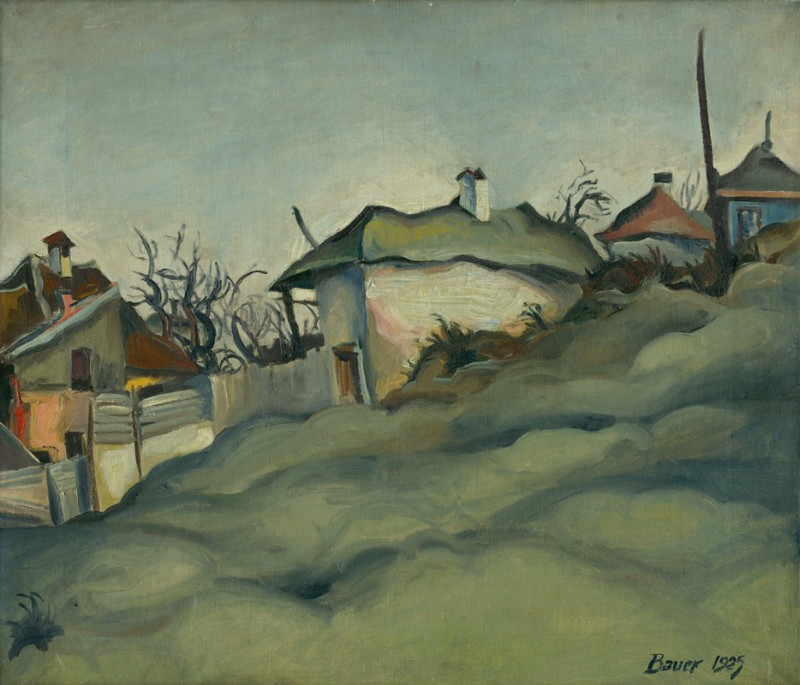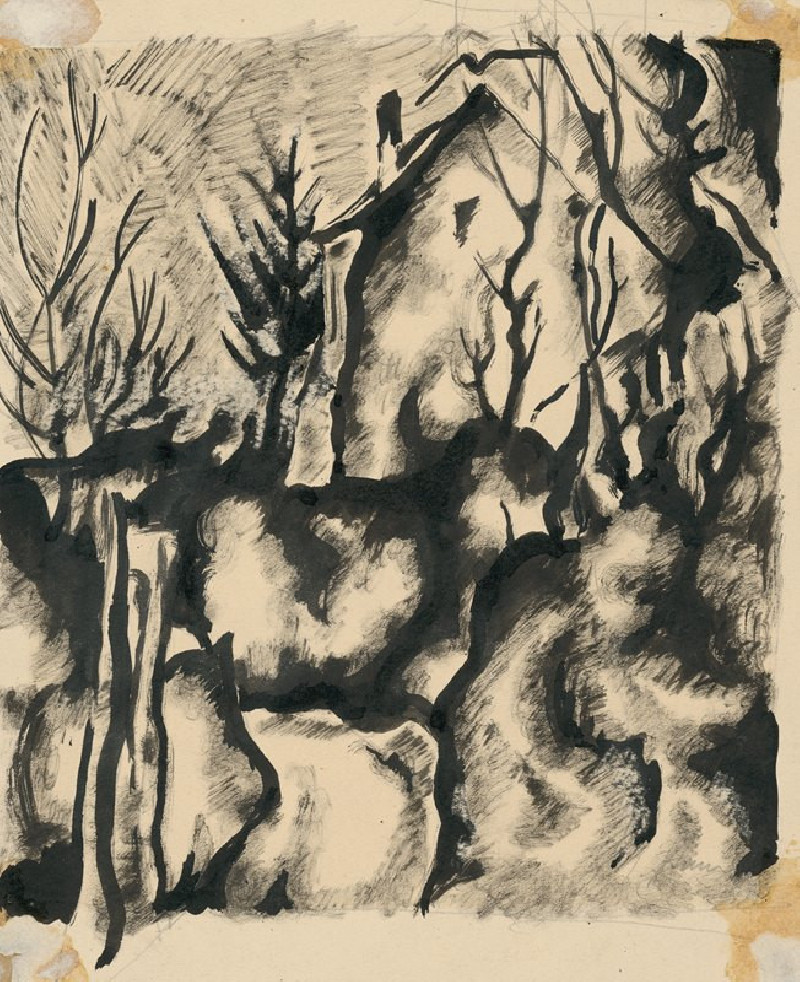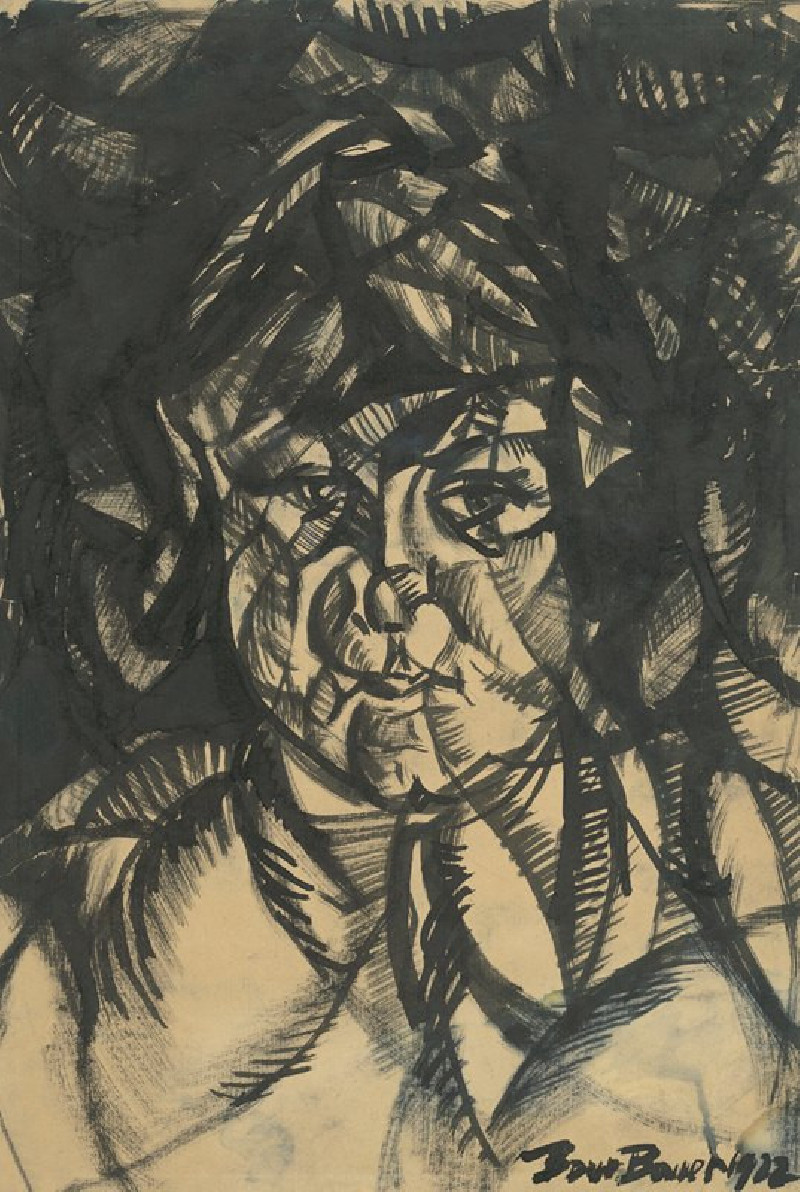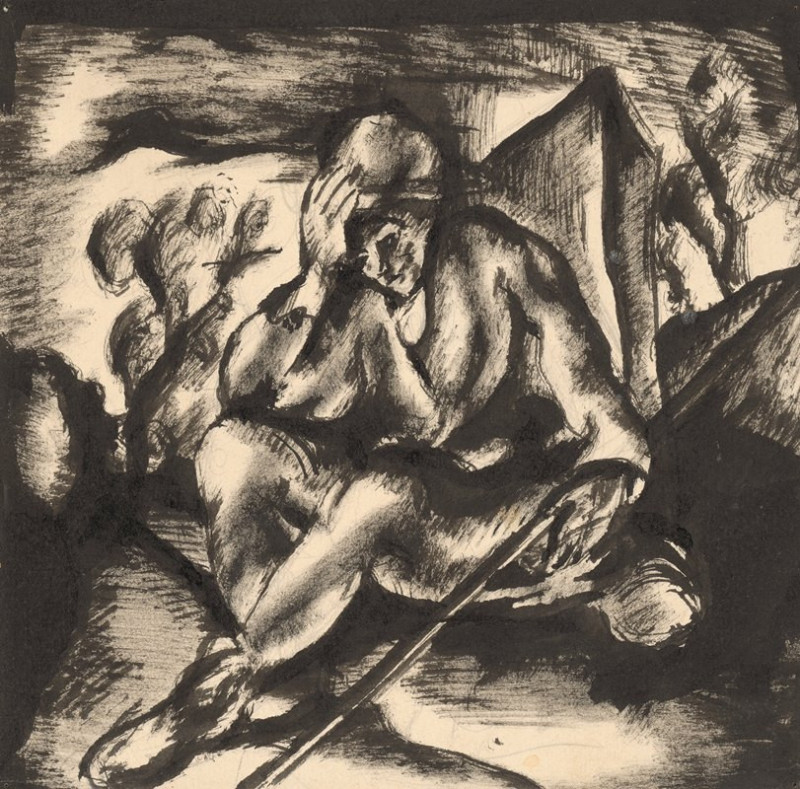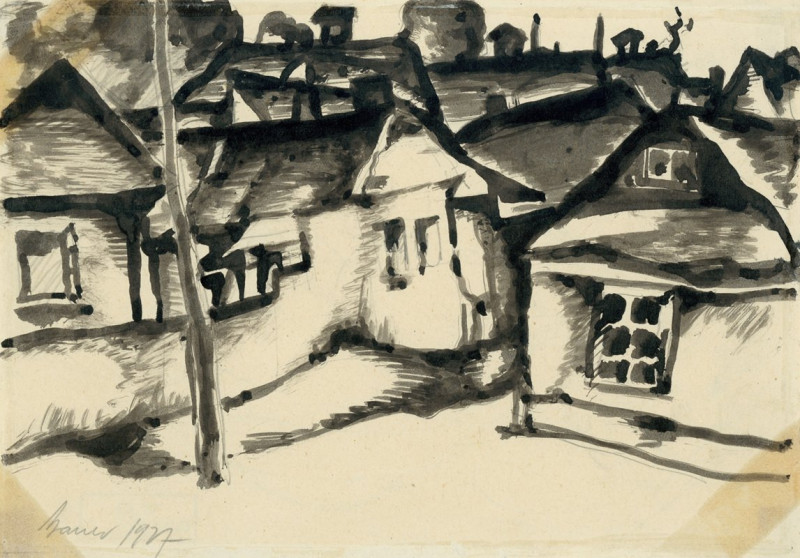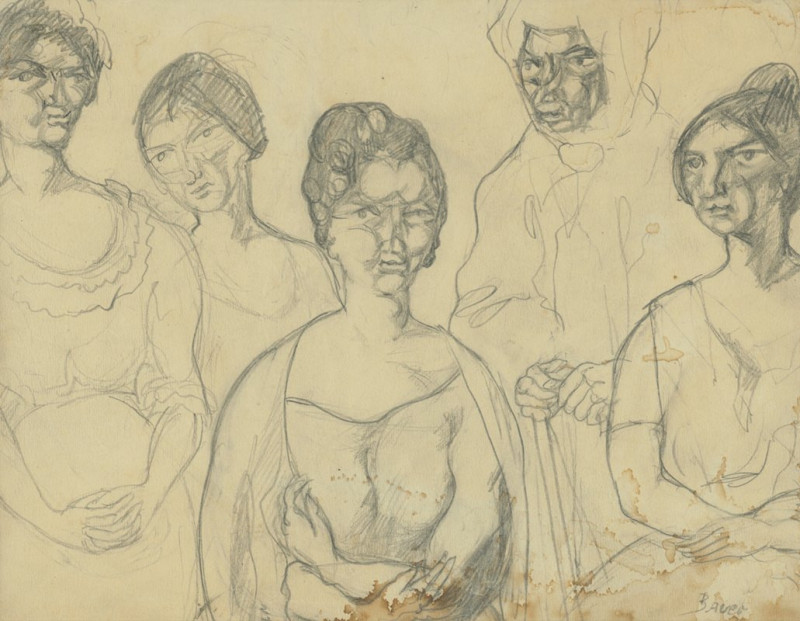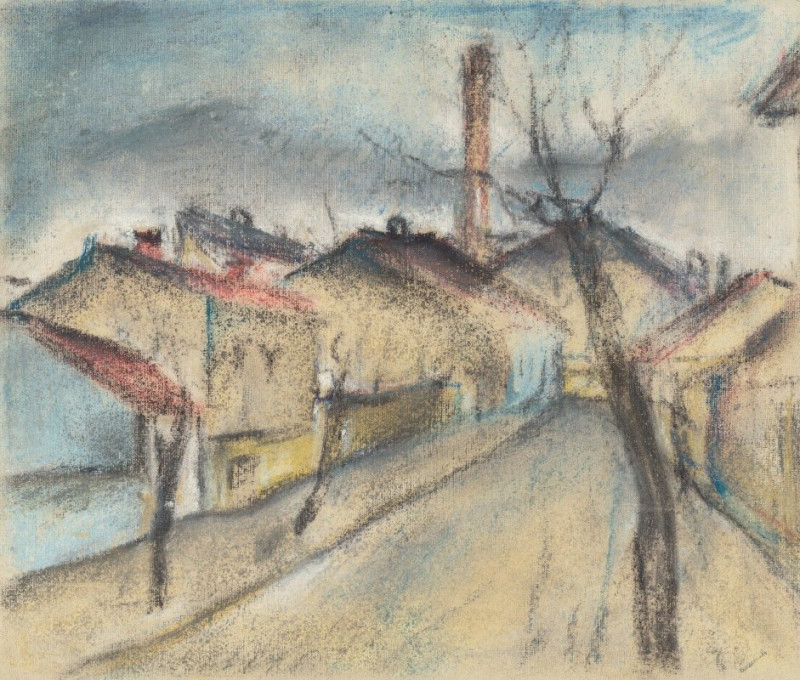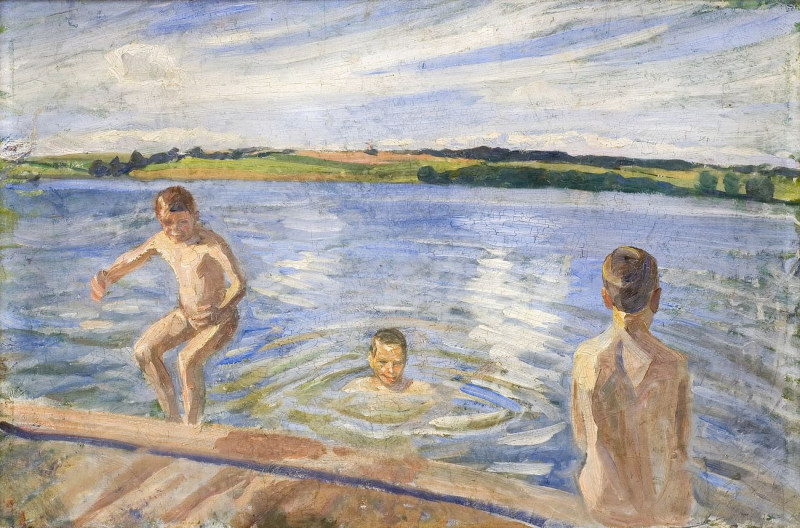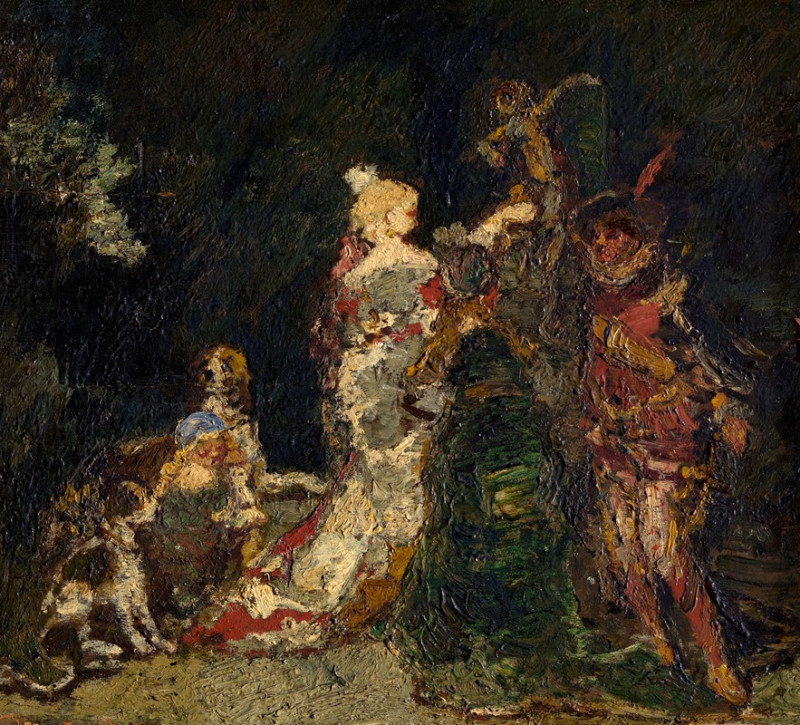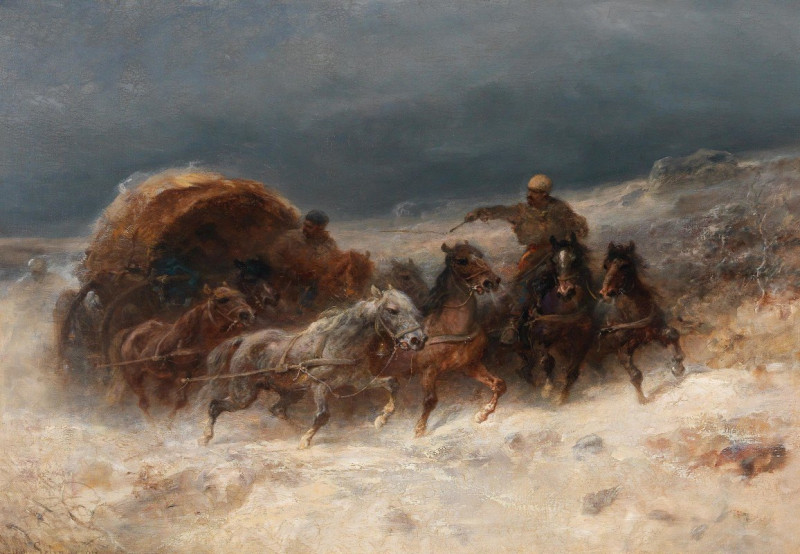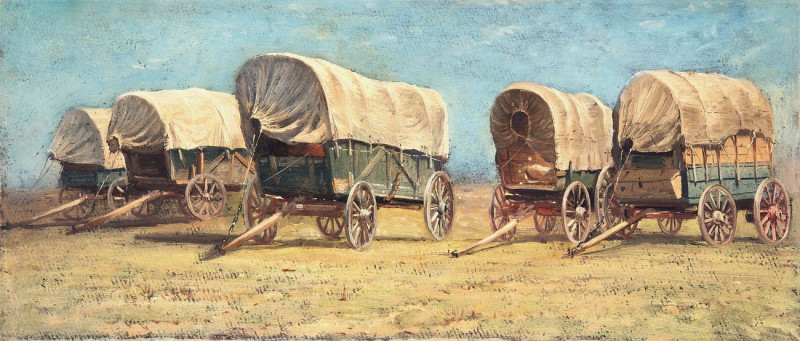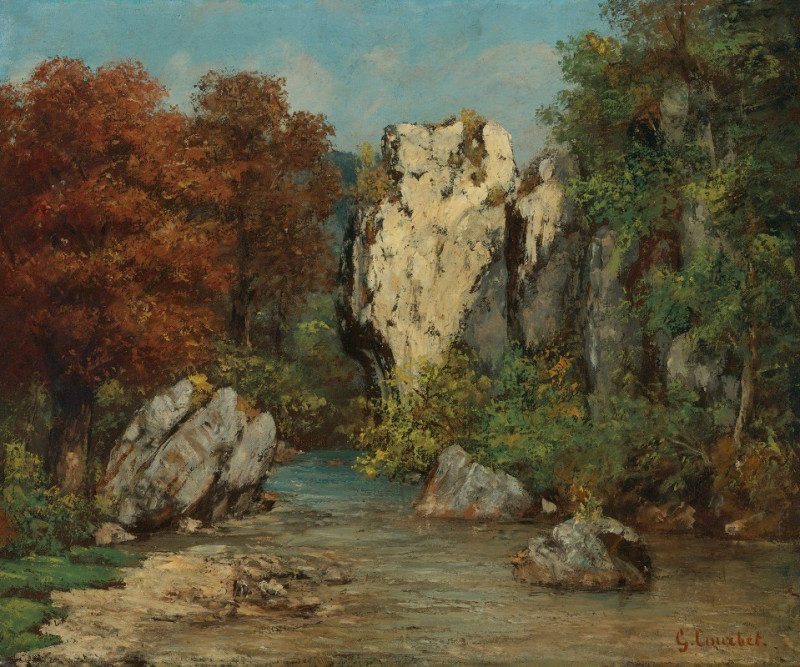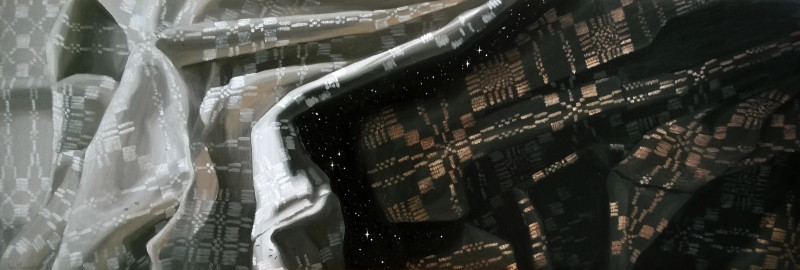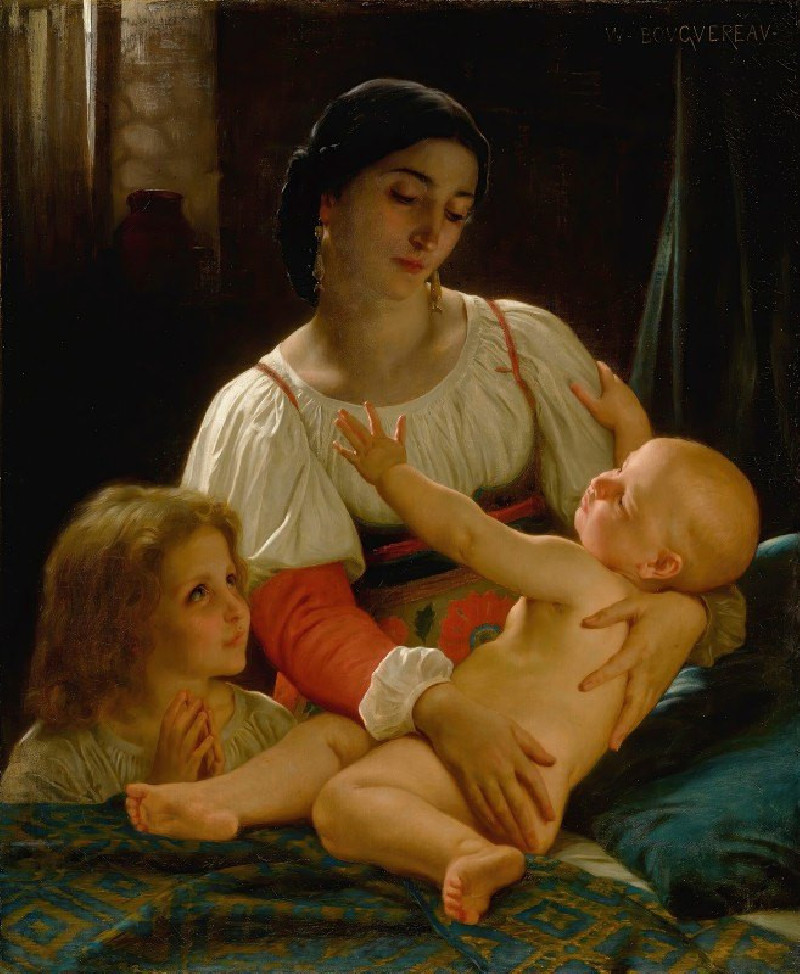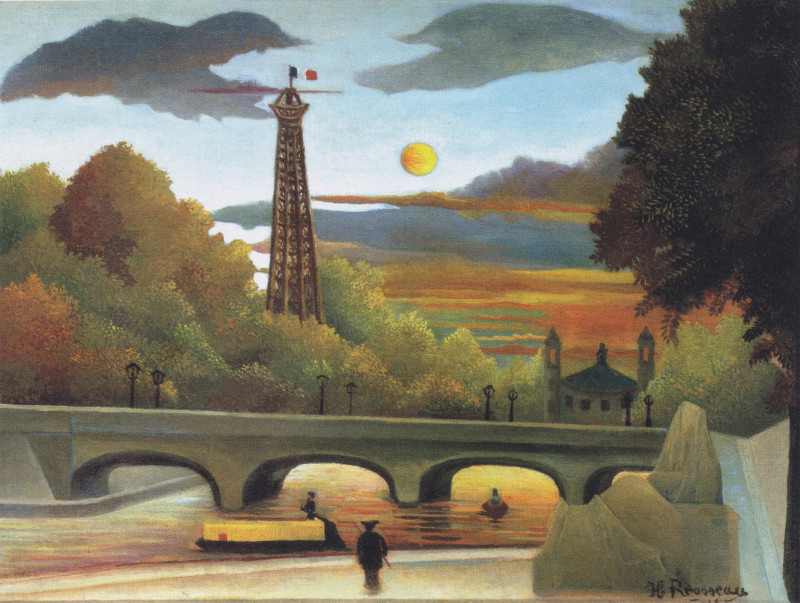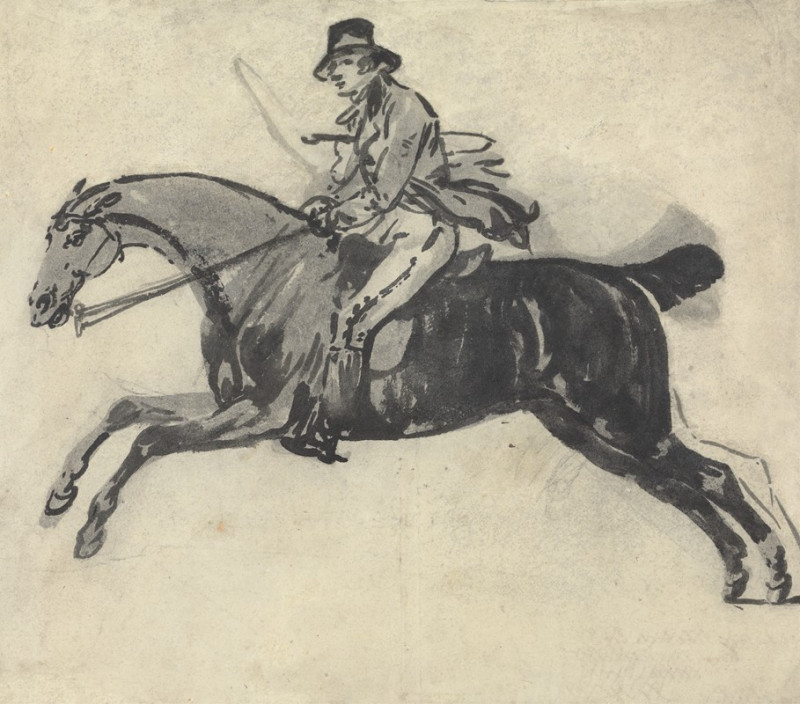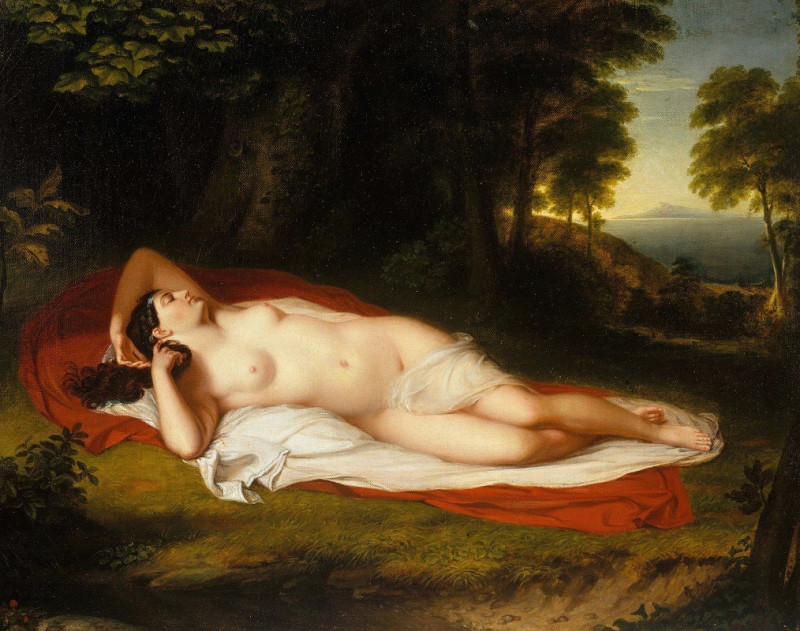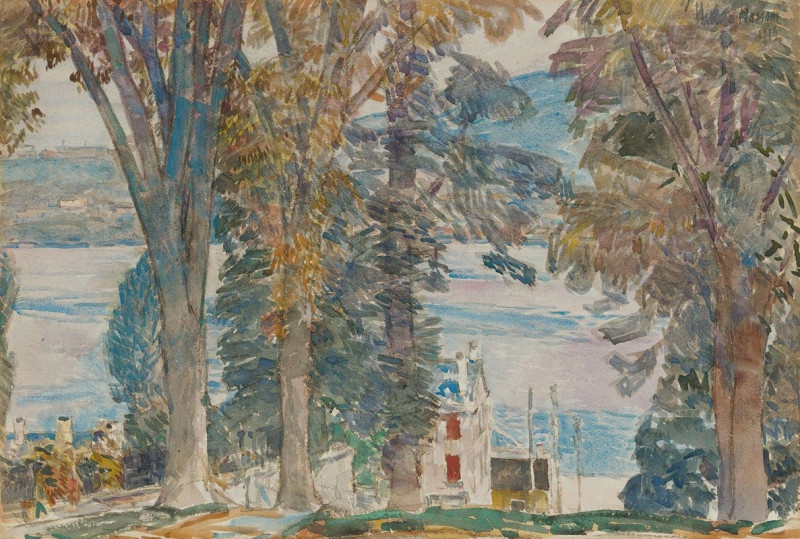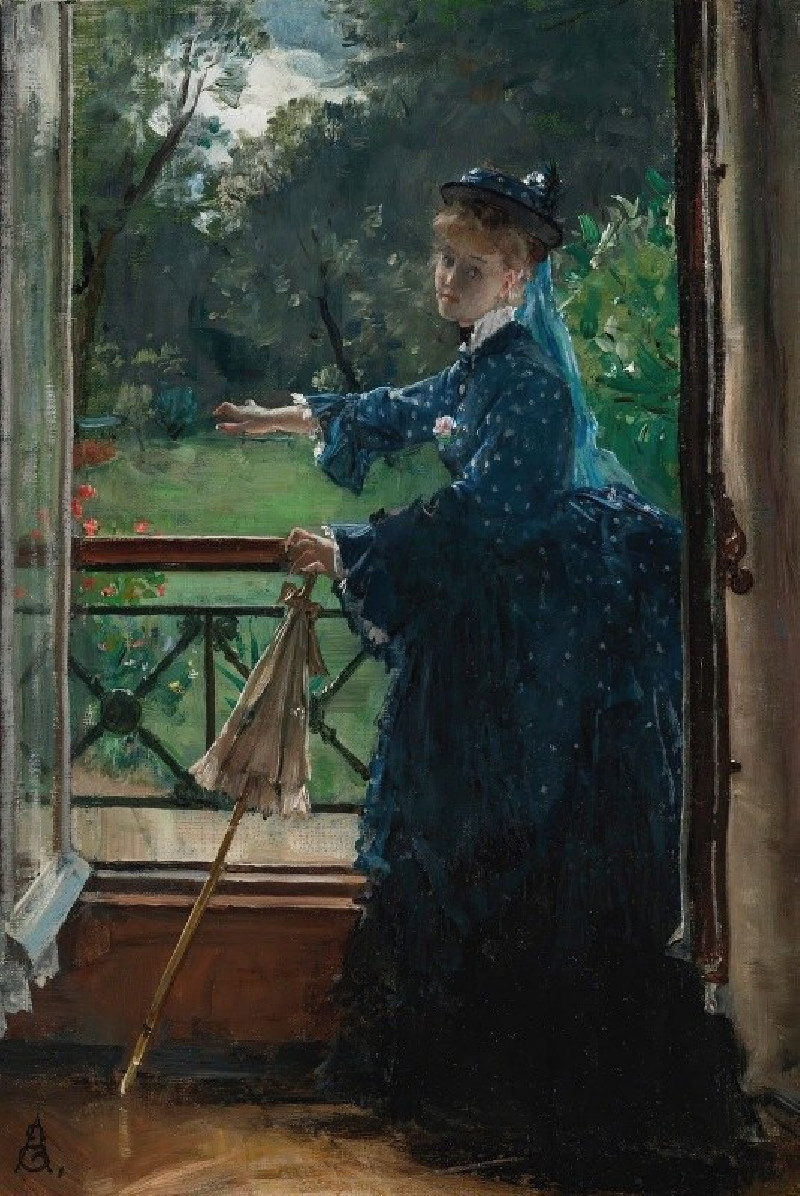Na okraji mesta (1927)
Technique: Giclée quality print
Recommended by our customers
More about this artwork
Artist: Konštantín BauerYear: 1927Konštantín Bauer's "Na okraji mesta," painted in 1927, offers a vivid, expressionist glimpse into the urban landscape of the early 20th century. This artwork captures an almost unsettling transition zone where the hustle of city life meets the quiet of suburban space. The densely clustered houses, depicted in skewed perspectives and angular forms, seem to rise abruptly from the earth, embodying a chaotic yet rhythmic harmony.Bauer uses a somber palette dominated by blues, grays, and earth tones, pierced with occasional bursts of reds and oranges. These colors not only suggest the materiality of the buildings—an amalgamation of brick, wood, and plaster—but also reflect the emotional and atmospheric tones of the scene. The dark contours and shadowed areas enhance the sense of depth and compression within the urban environment, while lighter streaks in the roads and sky open the composition, offering a breath of movement through the tight structures.The painting's textured surface and the bold, almost aggressive application of colors foster a sense of visceral immediacy. One can almost feel the cool air and hear the distant, muffled sounds typical of a town on the brink of night or enduring the early hours of a foggy morning."Na okraji mesta" captures not just a physical location, but an emotional and psychological boundary. It invites viewers to contemplate the intersections of human construction, the natural environment, and the ever-evolving narrative of urban life.
Delivery
Returns
Konštantín Bauer was a Slovak painter.
Konštantín Bauer was born on November 24, 1893 in Slovenská Ľupča. He spent his childhood in Banská Bystrica. At the age of fifteen, he moved with his parents to Košice, where he graduated from high school. After graduating in mechanical engineering in Budapest in 1915, he worked briefly as an engineer in Novo Mesto pod Šiatrom. From 1916 to 1918 he worked as a railway engineer in Transylvania and then as a civilian employee at the Ministry of War in Vienna.

